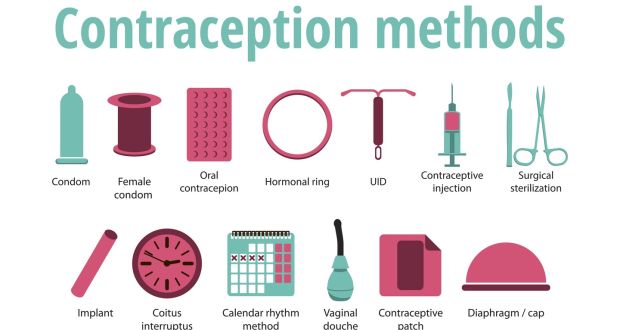
Birth control is designed to prevent pregnancy, but does not protect against other sexually transmitted infections. Birth control methods may work in a number of ways and it is best for you and your provider to decide together which method is best for you. Below is a break down of the different methods.
- Nexplanon, also known as the implant: This method is over 99% effective in preventing pregnancy. It is placed under the skin in your upper arm by a health care provider and also must be removed by a health care provider. It can stay in for up to 5 years, can help lessen the symptoms of your period, often decreasing cramps, and you can become pregnant right after it is removed.
- Progestin IUDs (Mirena, Kyleena, Skyla, Liletta): This method, also known as an intrauterine device, is over 99% effective in preventing pregnancy. It must be placed in the uterus by a health care provider. Depending on which IUD is chosen, it may be left in place for 3-7 years. IUDs may improve period cramps and bleeding, can be used while breast feeding, and you can become pregnant right after it is removed.
- Copper IUD, also known as a paragard IUD: This method is non-hormonal. It is over 99% effective in preventing pregnancy and may be left in place for up to 10 years. This also must be placed by a health care provider. This method may cause more cramps and heavier periods as there are no hormones in the device.
- The shot, Depo-Provera: This method is a shot that is given every 3 months. It is 96% effective in preventing pregnancy. This typically will decrease periods and is convenient to not have to take a pill daily. This method may cause delay in getting pregnant after you stop the shots.
- The pill: There are two different types of pills, a combined pill including both estrogen and progestin, and progestin only pills. Pills must be taken daily to be effective against pregnancy. This method can improve PMS symptoms, acne, make periods more regular and less painful and prevent cancers of the uterus. You can become pregnant right after stopping the pills.
- The patch: This method is applied as a patch to your skin that is typically applied to your abdomen, buttocks, or upper body. The patch is applied once per week for three weeks, and during the fourth week you do not wear the patch to have a menstrual period.
- Barrier Methods: This includes diaphragms, male and female condoms. These methods must be used each time you have sex to be effective. Latex condoms, the most common type, help prevent pregnancy, and HIV and other STDs, as do the newer synthetic condoms.
- Emergency contraception, also known as Plan B: Emergency contraception is not meant to be used as a regular method of birth control. It can be used after no birth control was used during sex, or if the birth control method failed, such as a condom breaking. You may take Plan B up to 5 days after unprotected sex, but the sooner it is taken the better they will work.
